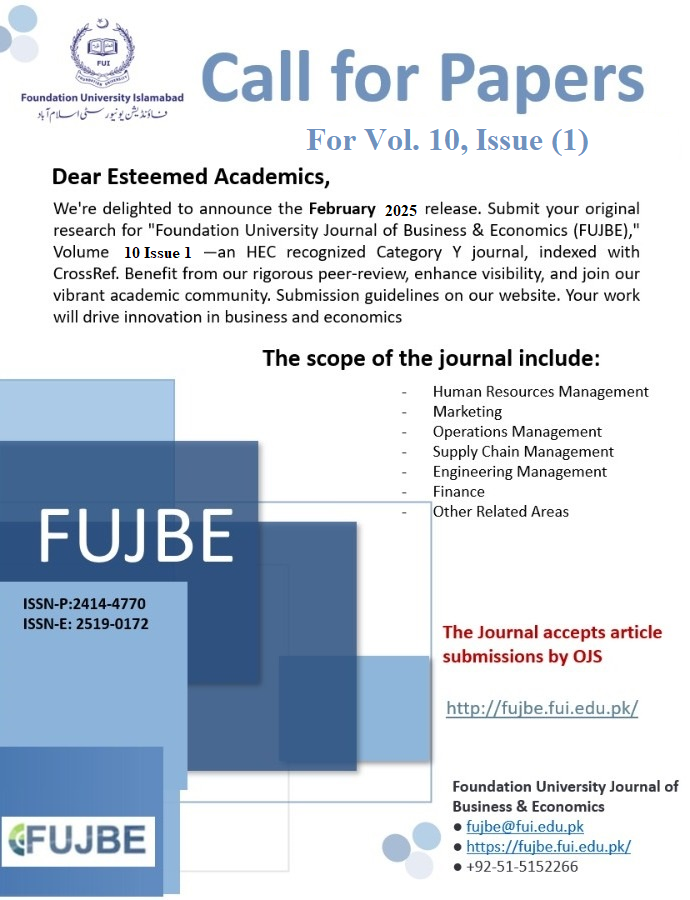Monetary Policy, Cash Flow and Corporate Investment: Evidence from Pakistan
DOI:
https://doi.org/10.33897/fujbe.v9i2.935Keywords:
Cash flow, monetary policy, corporate investment, dynamic panel modelAbstract
The current research aims to study the combined effect of micro-economic factor internal cash flow (CF) and
macro-economic factor monetary policy on investment behavior of non-financial firms listed on Pakistan Stock
Exchange over the period of 2010-2020. Dynamic panel model is used in the study for empirical testing of the
hypotheses. One-step and two step system with Quintile regression GMM estimation techniques were applied for
empirically testing of hypothesis. Data were collected from secondary sources through company’s annual
published and audited financial statements and from company’s website of 265 non-financial firms Pakistan. The
results identify cash flow has an inverse relationship with investment of firms in one step system GMM i.e. simple
regression. However, cash flow tends to increase the level of investment in all other regression models. The
contractionary monetary policy would likely to decrease the investment. Cash flow decreases the investment of
firms in lower quintile of firms as compared to high quintiles. Monetary policy decrease the investment in lower
quintiles but this relationship tends to be positive when firm move towards high quintiles of firm investment. The
magnitude of cash flow and monetary policy varies in all quintiles of firm investment. Overall, the results are
inconclusive across all the level. This study suggested that financial managers should manage internal cash flows
to increase cash reserves in order to meet capital expenditures and project’s needs of non-financial firms in
Pakistan.



